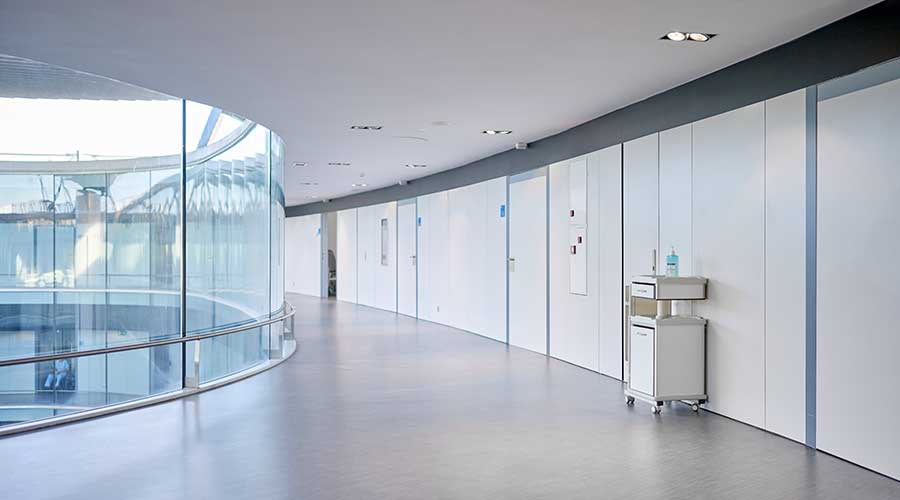The COVID-19 pandemic has forced countries and companies around the world to think deeply about the health and safety of their people. It is morally and economically essential that, as employees begin to emerge from lock-downs, they can be confident that their offices and places of work are equipped to minimize the risks of infection.
The COVID-19 pandemic has forced countries and companies around the world to think deeply about the health and safety of their people. It is morally and economically essential that, as employees begin to emerge from lock-downs, they can be confident that their offices and places of work are equipped to minimize the risks of infection.
The bad news is that our built environment is not nearly as effective as it could be in keeping people safe, healthy and productive. The good news is that the technology we need to solve this problem already exists and is widely used in laboratories, hospitals and other critical environments.
Research has shown that buildings with poor indoor air quality (inadequate ventilation, filtration or humidity control) can promote the spread of airborne bacterial or viral infections. This is not a new phenomenon. In 1976 there was an outbreak of Legionnaire’s Disease in Philadelphia, caused by bacterial infiltration of a hotel air conditioning system.
That outbreak led to a revolution in the design and regulation of HVAC systems. Today, the evidence of airborne spread of the novel coronavirus in poorly-ventilated buildings calls for a similar re-examination of how we manage indoor environmental quality. As Dr. Joseph Allen of the Harvard Chan School of Public Health said recently, “Your building manager has more impact on your health than your doctor.”
Managing the built environment to control humidity, ventilation and optimal filtration has long been much harder than it should be. The data show that many systems do not meet the needs of building occupants because of poor design, maintenance or operation. Fortunately, in recent years we have seen great improvement on these fronts in critical environments such as hospitals, vivariums and laboratories, with measurably better results for health and the bottom line.
Higher outside air change rates, matching airflows to occupancy, and improved filtration methods can reduce the concentration of airborne virus particles. Accurate measurement and control systems can maintain proper indoor humidity, mitigating the spread of the novel coronavirus and other RNA viruses, and additional measures such as UV coil treatment can further reduce the potential for viral and bacterial transmission in air streams.
Better data management protocols allow building managers to improve efficiency and effectiveness by targeting air-quality measures exactly where they are needed.
The Smart Labs program, created by UC Irvine with support from Aircuity, and subsequently adopted by the University of Pennsylvania, Michigan State, Arizona State, and Eli Lilly, has proven that these advanced technologies make buildings more efficient, safer, and smarter than they were previously. Those technologies and related best practices can now be put to wider use in all kinds of environments, through both new construction and the retrofit of existing buildings.
People are very rightly demanding that, as they return to work, they do so in buildings that are as healthy as possible. We have all the necessary tools to give them that assurance. We only need to recognize that from now on all environments are critical environments, and that schools, offices and other buildings can and should be made as safe and healthy as the best hospitals or laboratories are at present.
Ensuring optimal indoor environmental quality thus has a vital part to play in the immediate recovery from the pandemic, by minimizing the risks of indoor virus transmission and cutting exposure to the chemicals being used in enhanced cleaning regimes. It will build employee confidence and speed economic recovery.
Implementation of such measures requires investment, but in the new post-pandemic era it will be an unavoidable requirement for doing business. Fortunately, these Smart IEQ systems deliver additional benefits including environmental sustainability as well as support for employee (or student) general wellness, productivity and cognitive function, resulting in an excellent return on investment.
To ensure that all buildings are healthy, productive and safe we need a comprehensive strategy, built upon a solid foundation of existing and proven technology, and drawing on local and international expertise. Such a strategy will ensure that, instead of spreading infections and distress, the built environment actively helps its inhabitants to achieve their full potential. The disruption of the present crisis, while we are re-thinking some fundamental tenets of how we live and work together, is the perfect time to begin.
Dan Diehl is the CEO of Aircuity.

 Rethinking Facilities: A New-Generation Approach to Behavioral Healthcare
Rethinking Facilities: A New-Generation Approach to Behavioral Healthcare ThedaCare to Open Medical Center in Fond du Lac, Wisconsin
ThedaCare to Open Medical Center in Fond du Lac, Wisconsin UF Health Hospitals Rely on Green Globes to Realize Their Full Potential
UF Health Hospitals Rely on Green Globes to Realize Their Full Potential How Healthcare Facilities Can Be Truly Disaster-Resilient
How Healthcare Facilities Can Be Truly Disaster-Resilient TriasMD Breaks Ground on DISC Surgery Center for San Fernando Valley
TriasMD Breaks Ground on DISC Surgery Center for San Fernando Valley